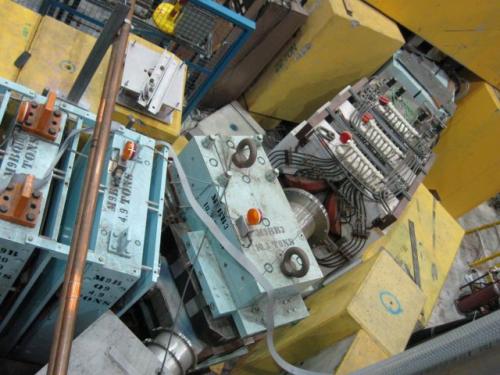M9B - Decommissioned
Equipment Name:
M9B - Decommissioned
The M9 beamline has two legs coming from the 1AT2 target, both specializing in negative muons. Leg A has an RF beam separator and is dedicated to rare-event experiments, like radiative muon capture. M9B, built by the University of Tokyo, is a backward µ+/µ- channel with a superconducting solenoid for the decay section. It delivers a high flux beam over a momentum range approximately 20-100 MeV/c; both ends are limited by dropping intensity: an intrinsic lack of low energy pions at the low end, and the current limits on some beam elements at the high end.
Category:
Beam Lines
Spin Rotation? :
no
Momentum Range (MeV/c):
20-100
µ- flux :
1 400
Slits Open:
11.00
Slits Closed:
3.40
Spins Rotated:
0.00
Maintenance Link:
Photo Gallery:

